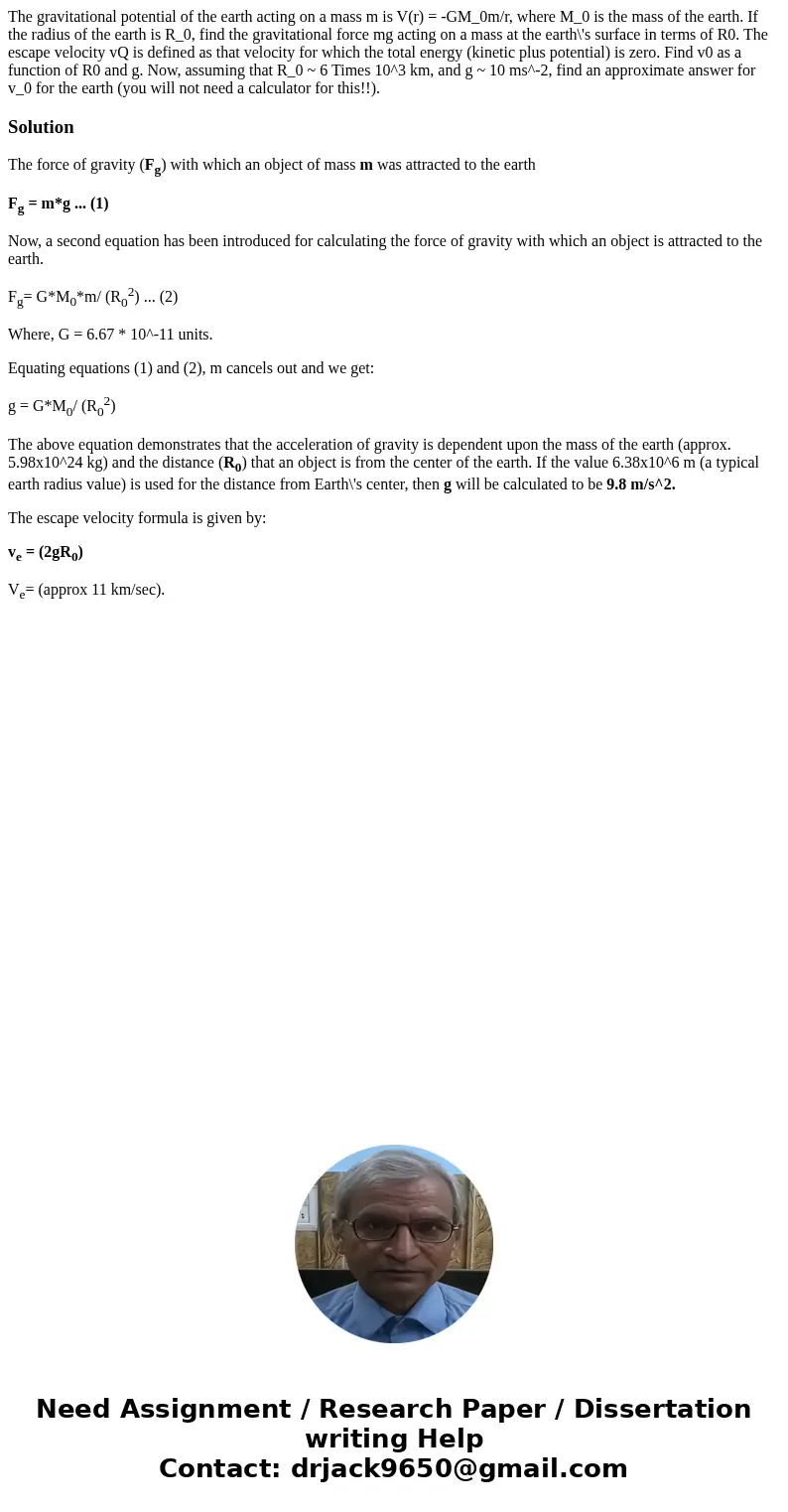The gravitational potential of the earth acting on a mass m
Solution
The force of gravity (Fg) with which an object of mass m was attracted to the earth
Fg = m*g ... (1)
Now, a second equation has been introduced for calculating the force of gravity with which an object is attracted to the earth.
Fg= G*M0*m/ (R02) ... (2)
Where, G = 6.67 * 10^-11 units.
Equating equations (1) and (2), m cancels out and we get:
g = G*M0/ (R02)
The above equation demonstrates that the acceleration of gravity is dependent upon the mass of the earth (approx. 5.98x10^24 kg) and the distance (R0) that an object is from the center of the earth. If the value 6.38x10^6 m (a typical earth radius value) is used for the distance from Earth\'s center, then g will be calculated to be 9.8 m/s^2.
The escape velocity formula is given by:
ve = (2gR0)
Ve= (approx 11 km/sec).

 Homework Sourse
Homework Sourse